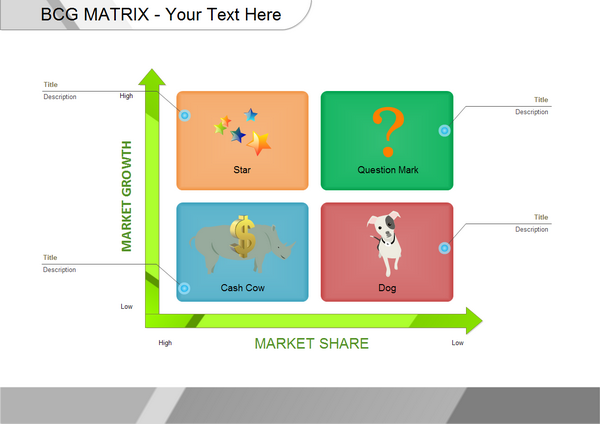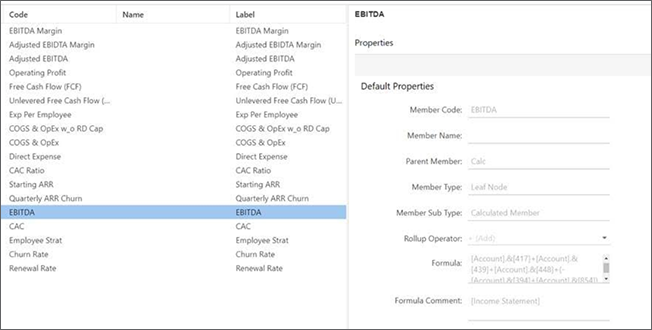Contents:


Xxvi) ‘Scheduled Commercial Bank’ shall mean a banking company included in the Second Schedule to the Reserve Bank of India Act, and includes the State Bank of India, corresponding new bank and Regional Rural Bank. Xxiii) ‘Other Approved Securities’ shall mean Government Securities, other than the securities mentioned in Section 3 above, subject to the condition that they are notified as approved securities. Xix) ‘Local Area Bank’ shall mean a banking company licensed as such under Section 22 of the Banking Regulation Act, 1949 .
Cash Reserve Ratio: A non-performing asset for banks? – Moneylife
Cash Reserve Ratio: A non-performing asset for banks?.
Posted: Mon, 27 Aug 2012 07:00:00 GMT [source]
Repo and reverse repo rates form a part of the liquidity adjustment facility. Act, 1949 read with Section 56, ibid, as at the close of business on each alternate Friday during the month. Where such alternate Friday is a public holiday under Negotiable Instruments Act, 1881 for one or more offices of the bank, the Return shall give the preceding day’s figure in respect of such office or offices, but shall nevertheless be deemed to relate to that Friday. Loans out of Foreign Currency Non–Resident Accounts , (FCNR Deposits Scheme) and Inter-Bank Foreign Currency deposits shall be included as part of bank credit for the purpose of these Directions.
What is Scheduled Commercial Bank?
NDTL is the total demand and time liabilities (i.e.deposits) of the public, held by the banks with other banks. Demand deposits contain all such liabilities that the bank is supposed to pay on demand. They include current deposits, demand liabilities portion of savings bank deposits, balances in overdue fixed deposits, and demand drafts. Time deposits consist of deposits that will be repaid on maturity, where the depositor will not be able to withdraw his/her deposits immediately. A) include balances with banks in current account, balances with banks and notified financial institutions in other accounts, funds made available to banking system by way of loans or deposits repayable at call or short notice of a fortnight or less and loans other than money at call and short notice made available to the banking system.
Until 24 June, commercial banks were earning a 3.5% interest on the money above the cash reserves that they maintained over the stipulated 3%. It often serves as a mirror to the overall economy, with banking activity enabling investment decisions. Along with repo rate, reverse repo rate, etc., Cash Reserve Ratio and Statutory Liquidity Ratio are crucial components of banking operations.
- Individuals usually pay higher interest on loans than what they earn through savings or current deposits.
- It also stated that it would not be charging any penalty on failure to maintain CRR.
- Right now, CRR is about 4.75% that means if people deposit total Rs.100 in SBI, then SBI would have to deposit Rs.4.75 in RBI.
- The duration of these loans generally varies between one day to a fortnight.
- While the main objective of monetary policy tools like CRR and SLR is to maintain liquidity, there are multiple objectives that these tools serve as well.
The Reverse Repo Rate is the rate at which banks lend money to RBI as a loan or rather as a deposit in RBI. RBI pledges collateral of government securities and banks park their excess funds at RBI. RBI pays the banks the interest at Reverse Repo Rate to have account deposits and buy back these securities when the tenure of the Reverse Repo Rate ends. RBI sets the Reverse Repo Rate in India as per the Monetary Policy of the country. On 13 February, Mint first reported the serious differences between RBI and the government on the interest payment on CRR.
Annex B / Annex – II to return in Form ‘A’ / Form ‘B’ giving details about investment in approved securities, investment in unapproved securities, memo items such as subscription to shares/debentures/bonds in primary market and subscriptions through private placement. Securities offered as collateral to the Reserve Bank for availing liquidity assistance under MSF up to the permissible percentage of the total NDTL in India, carved out of the required SLR portfolio of the bank concerned. Loans/borrowings from abroad by banks in India shall be reckoned as ‘liabilities to others’ and shall be subject to reserve requirements. On the other hand, lending to banks abroad will not be considered as assets with the banking system and hence will not be allowed to be netted out from inter-bank liabilities. Xx ) ‘Marginal standing facility’ 2shall mean the facility under which the eligible banks can avail liquidity support from the Reserve Bank against excess SLR holdings.
Download Chapter IX and Annex forming part of above Master Direction
Global chief executives of 10 large consumer-facing companies such as Apple, Coca-Cola, Unilever, Mondelez, Yum! Brands, Mastercard, Pernod Ricard, Skechers, Crocs and Whirlpool said in recent quarterly earnings calls that their India businesses have been resilient. 3 The conversion rate of gold into rupees is to be done by crossing the London AM fixing for Gold/USD rate with the rupee-dollar reference rate announced by Financial Benchmarks India Private Limited . With the issue of these directions, the instructions/ guidelines contained in the following circulars issued by the Reserve Bank stand repealed. It is hereby advised that mere inclusion of any item in the above Master Direction should not be construed as a permission to undertake all such activities by a banking entity. Failure to submit the Return/late submission of the Return shall attract the provisions of Section 42 of RBI Act, 1934 and banks are liable for imposition of penalties as indicated therein.
To pay above salary and bills, SBI would need to maintain certain amount of profit margin, no matter what RBI does with CRR,SLR or Repo Rate. Public SectorPrivate SectorMajority of stake is held by the government. The paid capital and collected funds of bank should not be less than Rs. 5 lakhs. The banks included in this schedule list should fulfill two conditions.
Xvii) ‘Investment in India in other Government Securities’ shall mean Investment in Government securities which are not approved securities . Vi) ‘Bank credit in India’ shall mean all outstanding loans and advances including advances for which provisions have been made and/or refinance has been received . ‘Approved securities’ means those securities that are issued by the Central Government or any State Government or other securities that are specified by the RBI from time to time. The RBI specifies the SLR status of securities issued by the Government of India and the State Governments. Borrowers enjoying secured credit limit of Rs.10 lac & above & unsecured limit of Rs.5 lac & above- as on last Friday of April.
This is exactly what is happening in the banking industry today. The RBI puts the onus squarely on the government for the rising inflation in the economy, saying that it is due to supply side constraints and the fiscal deficit caused by the rising subsidy burden but can do nothing about it. And it does not bring down the interest rates fearing that it would fuel inflation and tinkers with the monetary policy by reducing the SLR, when the banks needed reduction in CRR to shore up their profits. RBI expects the banks to reduce their lending rates without any corresponding reduction either in repo rate or CRR. This amounts to punishing the banks for the inaction of the government. With a view to give some reprieve to the banks and to persuade them to bring down the lending rates, the finance ministry is reported to have mooted the idea of giving 7% interest on CRR deposits to banks, and then ask them to lower the lending rates, as the RBI has not so far resorted to any easing of the monetary policy.
Yes, if the entire banking industry is privatised, then please go ahead and lower. There was a disciplined school teacher in village school, who ensured that his students followed value systems, etc. He had one student, coming from the richest family in the village, but the boy was very indifferent in his studies, very mischievous and would not listen to the teacher’s admonitions. But the teacher was afraid to punish him as it might boomerang against him due to the influence commanded by the boy’s parents with the school management. The teacher would, therefore, pick up a poor man’s son and though he was innocent, punish him for all the wrong-deeds of the rich man’s son, making the poor student a whipping boy, much against his own wishes.
Maintenance of CRR (Cash Reserve Ratio)
Provided that the instruments referred to in items to mentioned above that have been acquired from Reserve Bank of India under reverse repo, shall be considered as eligible assets for SLR maintenance. The eligible banks shall have the option to borrow up to three per cent of their respective NDTL outstanding at the end of the second preceding fortnight. Iv) any other financial institution notified by the Central Government in this behalf, shall be reduced by the aggregate of the liabilities of all such banks and institutions to the State co-operative bank.
Lending rates of banks alter if the base rate changes which is after the effect of RRR changes. Till June, banks were required to keep 5% of their net demand & time liabilities with RBI in the form of CRR. Interestingly, the change in legislation is yet to be notified even as banks have stopped earning interest on their funds parked with RBI.

The banking industry has pitched in with a strong demand for resuming interest payment on their funds parked with RBI. The non-payment of interest on CRR is estimated to cost banks more than Rs 1,600 crore. Every Director, Manager or Secretary of the scheduled bank/ Small Finance Bank/ Payment Bank who is knowingly and willfully a party to the default, shall be punishable with fine which may extend to five hundred Rupees and with a further fine which may extend to five hundred Rupees for each subsequent fortnight during which default continues.
rbi pays interest on crr balances of banks at Reserve Ratio is one of the main components of the RBI’s monetary policy, which is used to regulate the money supply, level of inflation and liquidity in the country. The higher the CRR, the lower is the liquidity with the banks and vice-versa. During high levels of inflation, attempts are made to reduce the flow of money in the economy. Cash Reserve Ratio is the share of a bank’s total deposit that is mandated by the Reserve Bank of India to be maintained with the latter as reserves in the form of liquid cash. It is a compulsory reserve that the central bank of the country – The Reserve Bank of India , must maintain. Every commercial bank is obligated to maintain CRR, which is a specified percentage of their net demand and time liabilities.
Vii) ’Banking System’ or ’Banks’ wherever it appears in the prescribed Form A/Form B Return shall mean the banks and any other financial institutions referred to in sub-clause to of the Explanation below Section 42 and of the Reserve Bank of India Act, 1934. Government working to control inflation, says finance minister Nirmala Sitharaman”Because we took a very calibrated approach, today we have an inflation which is slightly above the tolerance limit, but which is constantly being worked at so it can be brought down,” Reuters quoted Sitharaman as saying. The rise in CRR has been triggered by inflation touching 5.5%. Assuming the banking system would have deployed Rs 13,500 crore at an average rate of 9%, the returns would be to the tune of Rs 1,215 crore, and so the impact is minimal, officials said. In June, with the amendment to the RBI Act, the floor level of banks’ CRR, which was kept at 3%, has been abolished along with the discontinuation of payment of interest on the sum parked with RBI.
Moneylife Online Magazine
Now that interest payments on cash balances restored, it comes in as a great relief to the banking system,” says a chairman of a Mumbai-based public sector bank, who did not want to be quoted. The liabilities of a bank include call money market borrowings, certificates of deposit and investment in deposits in other banks. In short, the higher the Cash Reserve Ratio, the lesser is the amount of money available to banks for lending and investing. And Reverse repo rate is automatically kept 1% less than Repo rate, so that makes Repo rate the “most frequently used tool” in RBI’s monetary policy, in last two years. Because on your normal savings account in SBI, the chief pays you around 4% interest rate, while RBI is giving him 7% Reverse repo rate, so he’s making a profit of 3%. It is a proportion of liquid assets per a percentage of time and demand liabilities.
- The company also recorded a 57% jump in customer collections from the real estate business, which increased to Rs. 2,258 crore in FY23 compared to Rs. 1,440 crore in FY22.
- Demand deposits contain all such liabilities that the bank is supposed to pay on demand.
- In pursuit of this goal, banks may lend out maximum amounts, to make higher profits and have very little cash with them.
- This is exactly what is happening in the banking industry today.
- The percentage of deposits which commercial banks are required to keep as cash according to the directions of the central bank.
These financial rates have an undeniable impact on the loan market of the country. The rates also change as per the changes in the economic climate of the country. You can always check the current CRR rate and SLR rates on the RBI website or reach out to your bank for more information. The central bank takes the contrary position in the event of a fall in inflationary pressures.
A) On the failure of the bank to maintain as on any day, the amount of SLR required to be maintained by a bank, the bank shall be liable to pay to the Reserve Bank in respect of that default, the penal interest as envisaged under Section 24 read with Section 56 of the BR Act, 1949. Ii) Funds borrowed under repo including tri-party repo in government securities shall be exempted from CRR/SLR computation and the security acquired under repo shall be eligible for SLR provided the security is primarily eligible for SLR as per the provisions of the Act under which it is required to be maintained. Loans/borrowings from abroad by banks in India shall be reckoned as ‘liabilities to others’ and shall be subject to reserve requirements.
Therefore, CRR is vital to ensure that there is always a certain fraction of all the deposits in every bank, kept safe with them. While ensuring liquidity against deposits is the prime function of the CRR, it has an equally important role in controlling the interest rates in the economy. In pursuit of this goal, banks may lend out maximum amounts, to make higher profits and have very little cash with them.
Is your money safe with scam-hit Indian banks? – Zee Business
Is your money safe with scam-hit Indian banks?.
Posted: Tue, 06 Mar 2018 08:00:00 GMT [source]
At the same time, the finance ministry has been egging them to keep their lending rates to corporates unchanged. So, any move to reinstitute interest on CRR would be welcomed by the banks. Of late, the Cash Reserve Ratio has become a bone of contention between the Reserve Bank of India and the commercial banks, though it is as yet at a low key for obvious reasons. Some time back, one chairman of a public sector bank equated the CRR to a non-performing asset and said that his CRR was the biggest NPA in his books. This is because, CRR does not earn any income for the banks just like the non-performing loans, and is, therefore, a drain on the profitability of banks. The similarity ends here, but the banks are feeling the pinch now more than any time before.
This is the RBI’s way of controlling the excess flow of money in the economy. The cash balance that is to be maintained by scheduled banks with the RBI should not be less than 4% of the total NDTL, which is the Net Demand and Time Liabilities. Every bank is required to maintain with RBI an average daily balance equal to a percentage of the net demand & time liabilities as stipulated by RBI from time to time. Further RBI does not pay interest on balance held for CRR purpose. Both CRR and SLR are crucial to the economy as they maintain cash flow and regulate liquidity in the country.
